Core Concepts
As described in the Introduction, your objective is to build a profitable airline by acquiring gates at different airports and launching routes, and then using those profits to pay out dividends.
Airports
There are six airports in Fortress Hub. Airports can be one of three sizes (small, medium, or large), and the size of the airport affects the maintenace cost of gates, the number of gates available at the airport, and the operating profit generated by routes from that airport.
- Size (small, medium, or large).
- Number of gates (small - 3, medium - 6, large - 10).
- The number of routes at that airport for each player. In this case, blue, green, and red each have 1.
- The maintenace cost per turn of owned gates.
- The airport's gates.
- A gate owned by the red player, used in a route to LAX.
- A gate owned by the blue player, not currently used in a route. Note - unused gates still incur maintenace costs.
- An unowned gate, available for auction.
When all of the gates at an airport are owned, the airport can be expanded. This takes place during the Airport Expansion phase.
Gates
You'll see a list of all your gates in the Gate section of your Financials. Each entry shows you the gate you own, which route it's used in, if it's used in a route, and the maintenance cost for that gate, along with your total maintenance cost across all your gates.
Gates can be acquired via auction during the Airline Development phase. During this phase you can also forfeit unused gates (give them back to the airport) or makes trades with other players.
Each gate you own can only be used in one route.
Routes
Routes are core of your airline, generating the income you need to expand your airline and pay out dividends.
You'll see a summary of all your routes in the Route section of your Financials. Each row shows you the route, the Route Size Factor, the Route Competitive Factor, the Route Network Factor, and the Route Operating Profit.
The Route Operating Profit is a function of the Size Factor, Competitive Factor, and Network Factor.
Size Factor: The Route Size Factor is the sum of the size factors of the airports the route connects. Airport size factors are 1, 2, or 3, correlating to airports sizes of small, medium, and large respectively. Route Size Factors can range from 2 - 6. Higher size factors mean higher operating profits.
Competitive Factor: The Route Competitive Factor is based on the number of directly competitive routes. A directly competitive route is a route operated by another player that connects the same two airports. Route Competitive Factors can be 0 (no other competitors, also referred to as a "monopoly route"), 1 (1 competitive route), or 2+ (2 or more competitive routes). Higher competitive factors mean lower operating profits.
Network Factor: The Route Network Factor is the sum of the number of routes you operating from each airport the route connects. Network Factors range from 2 to 7+. Higher network factors mean higher operating profits.
In short, you want routes that connect large airports, with lots of connections, and no competition. Refer to the Cost and Profit Reference to see the Route Operating Profit matrix.
Launching Routes
You can launch new routes during the Airline Development phase. In order to launch a new route, you must own an unused gate at each airport you wish to connect, and you must not be flying that route already.
Launching a new route carries a small fee (see the Cost and Profit Reference).
Managing Routes
You can close a route during the Airline Development phase. Closing a route opens up your gates to be used in other routes, or to be traded or forfeited.
Closing a route carries a small fee (see the Cost and Profit Reference).
You can also trade routes with other players during the Airline Development phase. When you trade a route, you also trade the gates used in that route.
